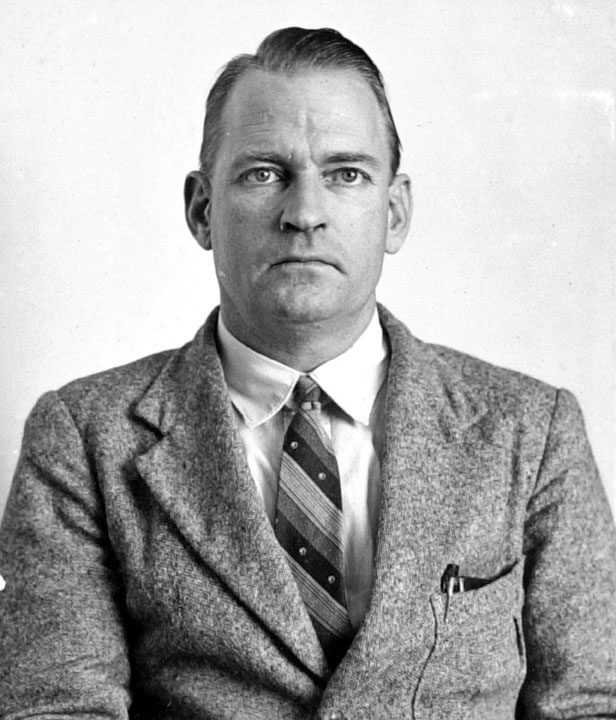
Dr F.H.S. Roberts was born on 16 January 1901 at Rockhampton, Queensland. ‘Bob’, as he was nicknamed, was educated at Townsville Grammar School and the University of Queensland (B.Sc., 1923; M.Sc., 1925; Ph.D., 1935). After being employed for six months as a microscopist with the Australian Hookworm Campaign, he joined the Commonwealth Prickly Pear Board as a research entomologist in April 1923 and worked at several field-stations in Queensland. The board’s investigation of biological control agents led to the introduction (1925) of the moth, Cactoblastis cactorum, and to the destruction (by 1930) of the prickly pear which had infested 65 million acres (26,304,850 ha) of the land in Australia.
In 1930 Roberts was appointed veterinary entomologist with the Queensland Department of Agriculture and Stock. From 1933 he was based at the Animal Health Station, Yeerongpilly. Sent abroad in 1938 to study the control of parasitic diseases in livestock, he visited laboratories in North America, Britain, Europe and South Africa. He also studied parasites of domestic animals, discovered a new tapeworm in pigeons and found trichostrongyles in rabbits. Between 1939 and 1941 he lectured part time in veterinary parasitology at the University of Queensland.
In May 1943 Roberts was psoted to the 2nd Mobile Entomology Unit, with which he studied the behaviour of Anopheles mosquitoes. Promoted major in October, he collaborated with his colleague Josephine Mackerras in experiments to combat malaria.
After the war, Roberts rejoined the Department of Agriculture and Stock as acting-director of research in the division of animal industry. In June 1947 he was appointed to the Council for Scientific and Industrial Research’s division of animal health and production as principal research officer and officer-in-charge of the newly established veterinary parasitology laboratory at Yeerongpilly. Under his direction, the laboratory gained a worldwide reputation for its studies of the parasitic diseases of cattle. He published a finely illustrated monograph, Insects Affecting Livestock, with special reference to important species occurring in Australia (Sydney, 1952), which became a standard textbook in Australia and overseas. He also initiated negotiations and planning for the Commonwealth Scientific and Industrial Research Organization’s new laboratories at Long Pocket, Indooroopilly, which were opened on 2 September 1968.
During his career Roberts, was invariably kind, supportive and encouraging to younger scientists in his division. He published 133 papers dealing with ticks, insects and parasitic worms. He was president (1935 and 1946) of the Entomological Society of Queensland and an associate-member of the Queensland division of the Australian Veterinary Association. Following his retirement in January 1966, he became a senior research fellow with the C.S.I.R.O. Over the next three years he wrote an authoritative monograph, Australian Ticks (Melbourne, 1970), which described their taxonomy and biology and drew on his research of more than thirty years.
The text on this page is an edited version of the entry in the Australian Dictionary of Biography:
Beverley M. Angus, ‘Roberts, Frederick Hugh Sherston (1901–1972)’, Australian Dictionary of Biography, National Centre of Biography, Australian National University, http://adb.anu.edu.au/biography/roberts-frederick-hugh-sherston-11536/text20581, published first in hardcopy 2002, accessed online 24 January 2017. This article was first published in hardcopy in Australian Dictionary of Biography, Volume 16, (MUP), 2002
The image from Wikimedia Commons and is a 1937 passport photograph of Dr FHS Roberts prior to departure abroad in 1938 to study the control of parasitic diseases in livestock. Queensland State Archives, Digital Image ID 3978


